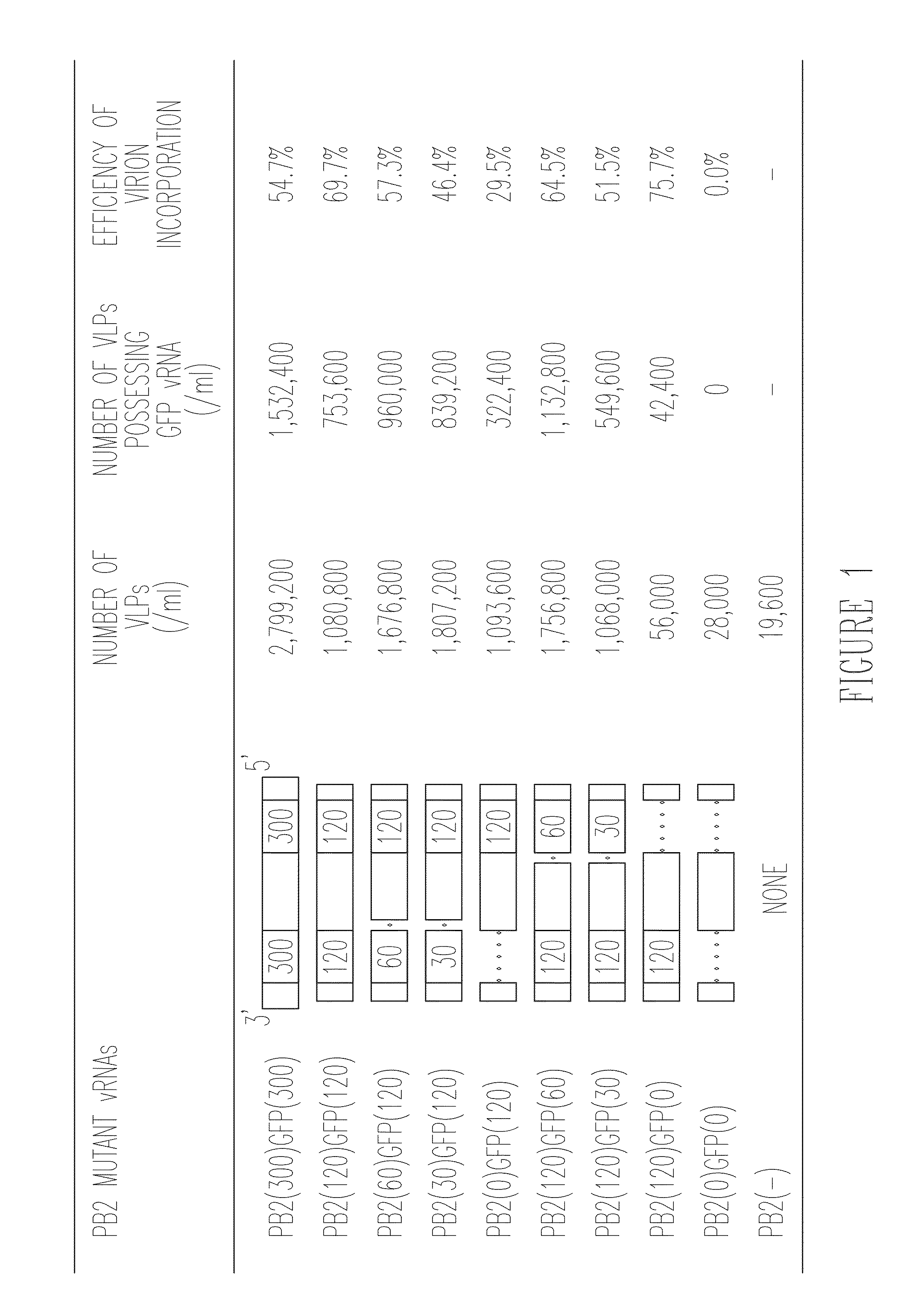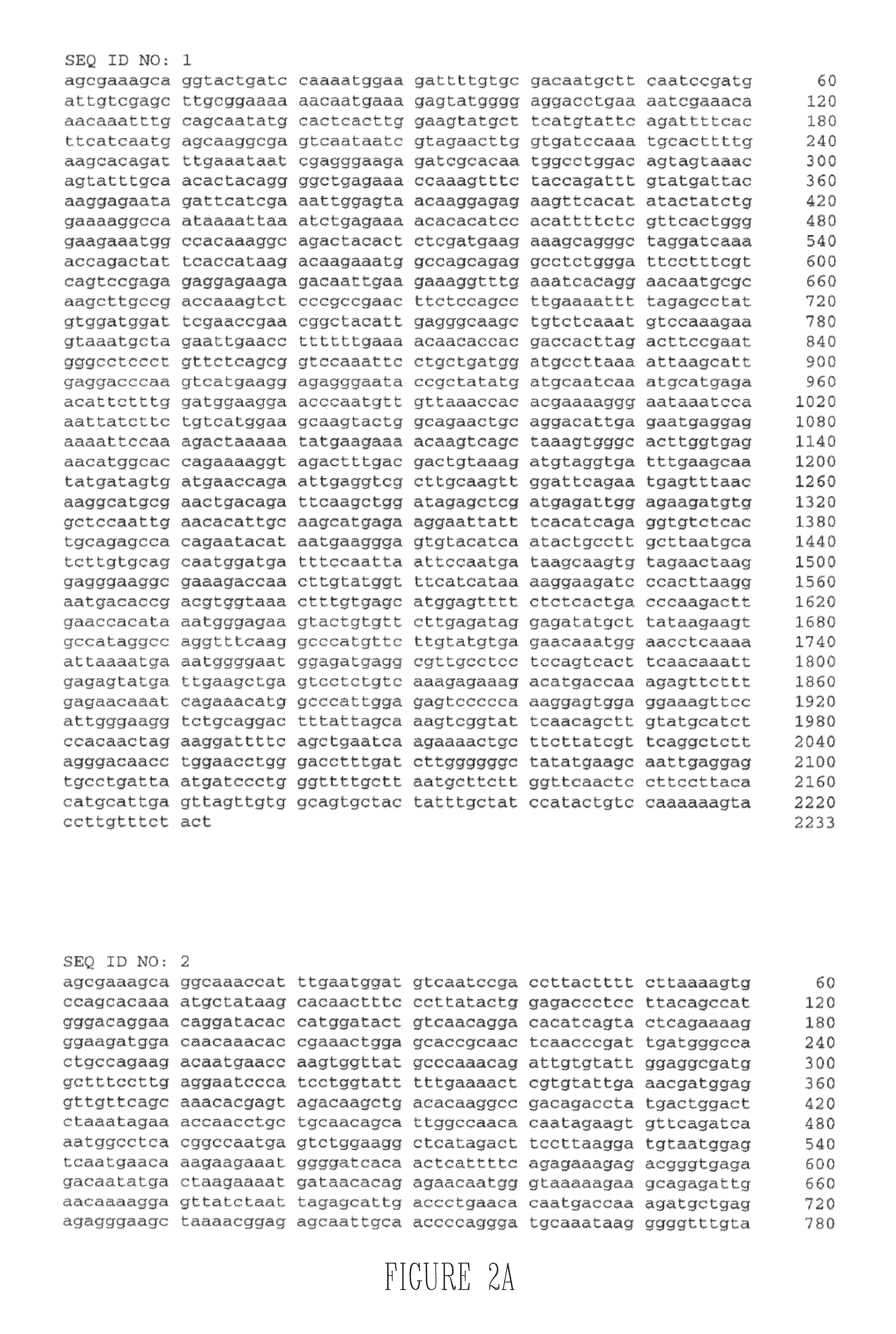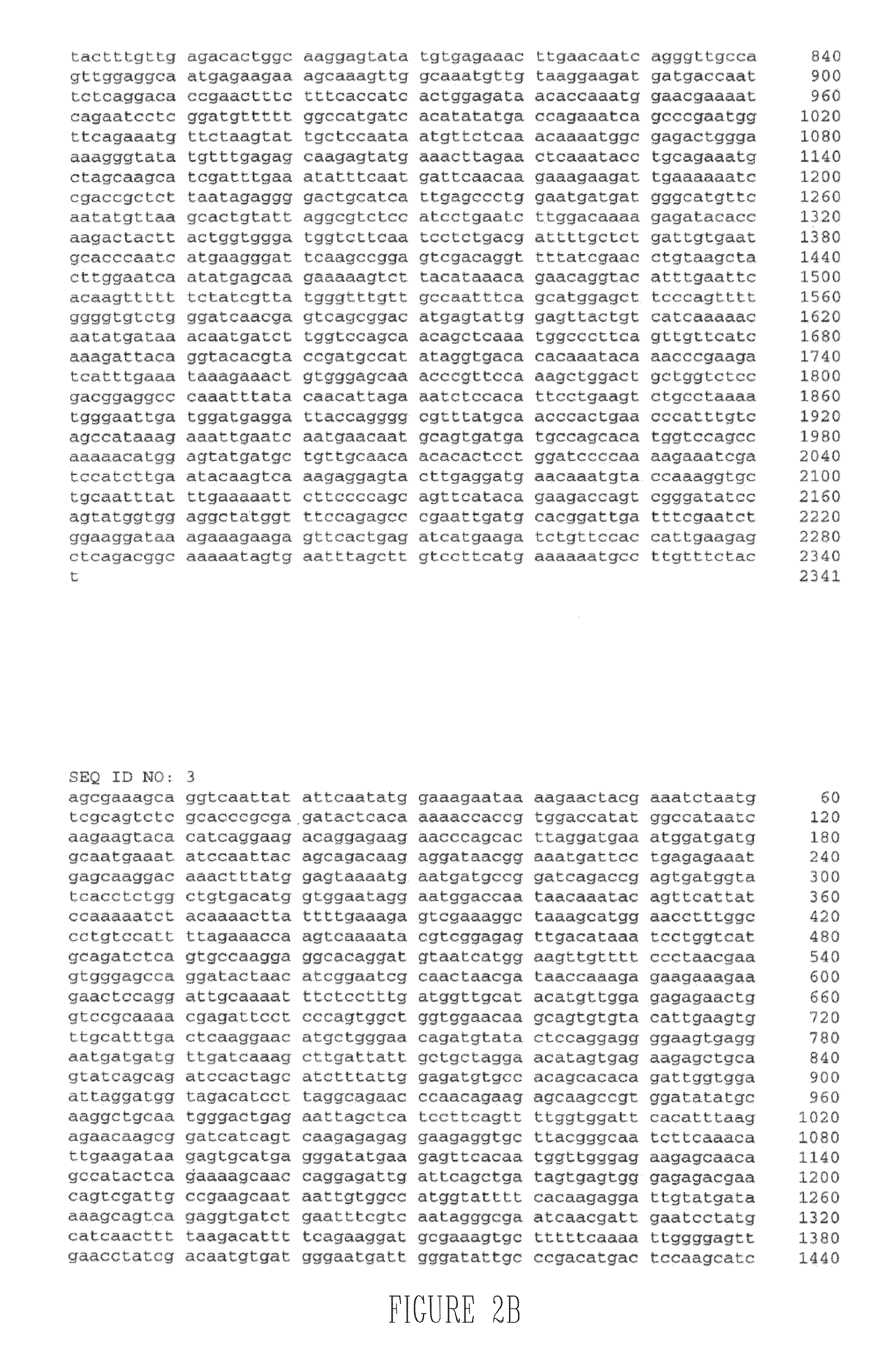Influenza viruses with mutant PB2 gene segment as live attenuated vaccines
a technology of attenuation vaccine and inactivated influenza, which is applied in the direction of viruses/bacteriophages, instruments, antibody medical ingredients, etc., can solve the problems of short protection period and limited efficacy of inactivated influenza vaccine, compromising mass vaccine production, and affecting the safety of vaccine production, etc., to achieve effective traceability, easy replication assessment, and satisfying safety concerns
- Summary
- Abstract
- Description
- Claims
- Application Information
AI Technical Summary
Benefits of technology
Problems solved by technology
Method used
Image
Examples
example i
PB2 Incorporation Sequences
[0125]Most defective RNA segments of influenza A viruses retain 150 to 300 nucleotides corresponding to the 5′ and 3′ ends of the respective gene segment (Duhaut et al., 1998; Jennings et al., 1983; Noble et al., 1995; and Odagiri et al., 1990), indicating that these 300 to 600 nucleotides may possess the structural features required for efficient genome packaging. To identify the regions in the PB2, PB1, and PA vRNAs that are critical for vRNA virion incorporation and virion formation, plasmids were generated in which the GFP gene is flanked by the noncoding regions and portions of the coding regions derived from both termini [PB2(300)GFP(300), PB1(300)GFP(300), and PA(120)GFP(120)]. Transfection of such a plasmid into 293T cells, together with expression plasmids for the PB2, PB1, PA, and NP proteins (minimal components for transcription and replication of vRNAs), resulted in the expression of GFP in cells, indicating that the chimeric vRNAs were synthes...
example ii
[0135]The stable expression of a foreign gene in a replication-incompetent influenza virus allows for the effective tracking of the manipulated virus. In pursuit of a biologically contained foreign gene-expressing virus with extensive applications in the field of virology, the PB2 protein, an influenza viral polymerase subunit that forms part of the trimeric viral RNA-dependent RNA polymerase that is essential for virus replication was selected. The partial coding sequences of the 3′ and 5′ ends of the PB2 viral RNA (vRNA) confer its more critical role in efficient infectious virion generation relative to the other vRNAs in the vRNA hierarchy (Example I and Muramoto et al., 2006). This finding suggests that a PB2-knock out (PB2-KO) influenza virus harboring a reporter gene flanked by the coding and non-coding sequences of the PB2 vRNA would replicate only in PB2-expressing cells while stably expressing the reporter gene.
[0136]A cell line that stably expresses PB2 protein was establi...
example iii
[0175]The PB2 protein of influenza viruses is an essential component of the trimeric viral RNA-dependent RNA polymerase subunit. PB2 is implicated in the regulation of host antiviral immune pathways and hence virulence and plays a major role in the incorporation of other individual vRNA segments (Muramoto et al., 2006). Example II describes a PB2-knock-out (PB2-KO) influenza virus that harbors reporter genes, such as the green fluorescent protein (GFP) in the coding region of its PB2 viral RNA (vRNA). The replication of the PB2-KO virus was restricted to only a cell line stably expressing the PB2 protein, yielding a high titre of >108 PFU / mL. Moreover, during replication PB2 vRNA encoding the reporter gene was stably incorporated into progeny virions and retained through sequential passages. Also, HA and NA vRNA of any influenza virus could be accommodated in the PB2-KO virus and be expressed in virus-infected cells. Therefore, the PB2-KO virus can be tailored to encode desired comb...
PUM
| Property | Measurement | Unit |
|---|---|---|
| pH | aaaaa | aaaaa |
| drug resistance | aaaaa | aaaaa |
| temperatures | aaaaa | aaaaa |
Abstract
Description
Claims
Application Information
 Login to View More
Login to View More - R&D
- Intellectual Property
- Life Sciences
- Materials
- Tech Scout
- Unparalleled Data Quality
- Higher Quality Content
- 60% Fewer Hallucinations
Browse by: Latest US Patents, China's latest patents, Technical Efficacy Thesaurus, Application Domain, Technology Topic, Popular Technical Reports.
© 2025 PatSnap. All rights reserved.Legal|Privacy policy|Modern Slavery Act Transparency Statement|Sitemap|About US| Contact US: help@patsnap.com



